How to Build an Onboarding Program That Gives You Insight into Your New Employees
Posted on September 16th, 2016 Read time: 2 minutes
Onboarding fulfills many purposes within your organization. Your new hires not only learn the skills and information necessary for fulfilling their responsibilities, but also learn to become productive workers who remain with your company longer. Find out how to effectively build an onboarding program that benefits your new employees as well as your business.
Expand Relational Onboarding
Rather than focusing solely on transactional onboarding, including coverage of policies, procedures, and job responsibilities, incorporate relational onboarding for the first six to 12 months or longer. Relational onboarding, such as discussing performance expectations, providing support, and explaining how the new hire’s role impacts the organization, sets up long-term learning opportunities. By extending relational onboarding, new hires become more competent in their roles, improve their output, and remain with your organization longer.
Implement Collaborative Learning
Because many employees learn best through on-the-job training rather than by reading manuals, assign a coach who’ll work directly with your new hire throughout the entire onboarding process. Your worker will retain more of what they learn, be more engaged in their tasks, and know who to go to for help in the future. Your employee will also assimilate into company culture more easily, understand their role within the department and within the company better, as well as reinforce the work skills of your trainer. You should also set up your new staff member with other workers in different departments so they feel like a valued member of your organization and improve their productivity.
Continue Structured Learning
Be sure you provide structure for extended education so your new worker continues learning and producing on higher levels. Create a guide for classroom trainings and connecting with colleagues for finishing assignments. Provide applicable training articles and videos that pertain to your staff member’s role. Set up checkpoints for individual, colleague, and managerial assessments as well as feedback on your employee’s progress. Include an endpoint that assists your worker with attaining their goals.
Measure Impact
Gathering data on the success of your onboarding program is imperative. For example, you should know how long it typically takes for a new hire to become productive and whether a staff member’s training was effective. At the program level, you’ll want to create metrics for defining business objectives, such as retention rates for new employees and participation, progression, and completion rates for training programs. Seek to understand whether the learning was productive and enjoyable and whether the staff member felt another item should’ve been included.
Standardize Your Program
Ensure that your onboarding process covers all new hires in every department. Workers will all be trained consistently, blend into company culture more easily, understand their role within the department and your organization more clearly, and help achieve company goals more effectively.
Building an effective onboarding program helps you fill your new employees’ needs so they remain productive members of your organization longer. For further assistance with all of your onboarding needs, get in touch with the friendly experts at Innovative Employee Solutions today!
Related Articles
Posted on September 16th, 2016 Read time: 2 minutes
Onboarding fulfills many purposes within your organization. Your new hires not only learn the skills and information necessary for fulfilling their responsibilities, but also learn to become productive workers who remain with your company longer. Find out how to effectively build an onboarding program that benefits your new employees as well as your business.
Expand Relational Onboarding
Rather than focusing solely on transactional onboarding, including coverage of policies, procedures, and job responsibilities, incorporate relational onboarding for the first six to 12 months or longer. Relational onboarding, such as discussing performance expectations, providing support, and explaining how the new hire’s role impacts the organization, sets up long-term learning opportunities. By extending relational onboarding, new hires become more competent in their roles, improve their output, and remain with your organization longer.
Implement Collaborative Learning
Because many employees learn best through on-the-job training rather than by reading manuals, assign a coach who’ll work directly with your new hire throughout the entire onboarding process. Your worker will retain more of what they learn, be more engaged in their tasks, and know who to go to for help in the future. Your employee will also assimilate into company culture more easily, understand their role within the department and within the company better, as well as reinforce the work skills of your trainer. You should also set up your new staff member with other workers in different departments so they feel like a valued member of your organization and improve their productivity.
Continue Structured Learning
Be sure you provide structure for extended education so your new worker continues learning and producing on higher levels. Create a guide for classroom trainings and connecting with colleagues for finishing assignments. Provide applicable training articles and videos that pertain to your staff member’s role. Set up checkpoints for individual, colleague, and managerial assessments as well as feedback on your employee’s progress. Include an endpoint that assists your worker with attaining their goals.
Measure Impact
Gathering data on the success of your onboarding program is imperative. For example, you should know how long it typically takes for a new hire to become productive and whether a staff member’s training was effective. At the program level, you’ll want to create metrics for defining business objectives, such as retention rates for new employees and participation, progression, and completion rates for training programs. Seek to understand whether the learning was productive and enjoyable and whether the staff member felt another item should’ve been included.
Standardize Your Program
Ensure that your onboarding process covers all new hires in every department. Workers will all be trained consistently, blend into company culture more easily, understand their role within the department and your organization more clearly, and help achieve company goals more effectively.
Building an effective onboarding program helps you fill your new employees’ needs so they remain productive members of your organization longer. For further assistance with all of your onboarding needs, get in touch with the friendly experts at Innovative Employee Solutions today!






